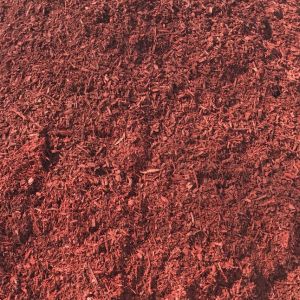Benefits and drawbacks of Mulch

Mulch is a great addition to any landscaping project any year. Just like putting a new coat of paint on your house, a new layer of mulch can really clean up and enhance your landscape. There are many colors of mulch to choose from as well to fit your preference
There are a lot of benefits of mulching every year that when applied properly outweigh any drawbacks.
Benefits of Mulch
Not only does mulch enhance your landscape by providing a clean and crisp look, it has many benefits for your plants as well.
Mulch retains moisture. A good layer of mulch (approximately 1.5” to 2”) will help retain moisture for your landscape plants, which will require less watering from you. Mulch also breaks down into vital nutrients into the soil that the plants and trees will uptake for better growth. With these added nutrients and water the soil under the mulch will eventually become softer and better aerated which will help plant root growth.
Mulch also helps to keep out weeds. While you can’t entirely stop weed growth you can certainly slow them down. A hardened layer of mulch will keep weed seeds from making it to the soil that they need to germinate as well as make it easier to pull any existing weeds due to the softer soil.
Mulch insulates the soil. Mulch will provide a blanket of sorts for plant roots in extreme temperatures. Mulch works to keep the soil temperature around your plants at a safe temperature by working as an insulating layer. In the summer the added moisture and shade will allow for cooler soil temperatures. In the winter the ground heat from the sun during the day will remain in the soil longer.
When and When not to mulch
At 317-Mulch-It we are here to provide you with the best materials for your garden as well as expert advice and service. With the benefits listed above mulch with proper plant care will help keep your landscape looking its best for years. Part of our experience is knowing when and when not to mulch. Here are a few things to keep in mind when laying mulch down on your garden.p>
Do not mulch evergreen trees and shrubs that are well established. The problem with evergreen plants and trees is the regular needle drop under the plant. Over time if you mulch under these plants, the layer of needles and mulch will build up too thick on the plant causing root rot and loss of oxygen. If you would like to mulch under any evergreen be sure to remove any old mulch and needles before hand and keep the mulch as light as possible.
Too much mulch can hurt more than it helps. Too much mulch is also harmful for plants. If mulch is too thick it starts to starve plants of vital oxygen needed in the root structure as well as preventing water and nutrients from making it to the soil as well.
Mulch cannot break down. When mulch is put down at the appropriate thickness oxygen and weather can work to break it down. While this means you have to mulch every year the benefits to your plants outweigh the cost. When oxygen can break down the mulch it mixes in with the soil layer as free nitrogen and other elements that help promote healthy plant life and longevity.
Call 317-Mulch-it for help with all of your mulch related questions or to purchase mulch and other landscape supplies!









